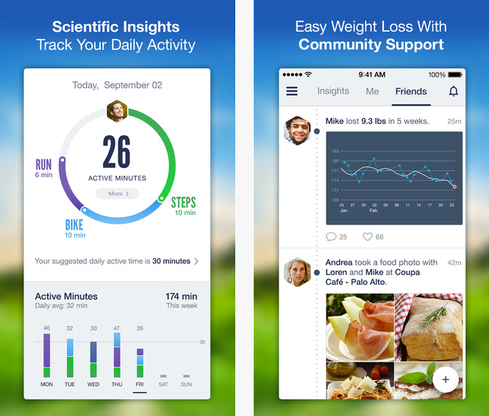iPhone 6s: Don't Expect Big ChangesiPhone 6s: Don't Expect Big Changes
The next iPhone, likely to be called the iPhone 6s, will look like the iPhone 6, but should have one unique feature to boost its appeal.


10 iPhone, Android Apps To Keep You Healthy
10 iPhone, Android Apps To Keep You Healthy (Click image for larger view and slideshow.)
Apple's next iPhone -- likely to be called the iPhone 6s -- won't differ all that much from the current model. That's what conventional wisdom suggests, especially when one considers Apple's pattern of behavior over the last few years.
If the next iPhone will mirror the last one, what's to set it apart? Apple always comes up with something.
The original 2007 iPhone was the only iPhone to stand on its own. Apple followed it with pairs of new designs: the iPhone 3G and 3GS, the iPhone 4 and 4S, and the iPhone 5 and 5s (and 5c, to a lesser extent). Apple may have recycled the chassis design in each of these pairs, but it made at least a few under-the-hood changes to give the second generation of each chassis its own appeal.
For example, the iPhone 3GS improved the camera from 2 megapixels to 3 megapixels, boosted storage from 16 GB to 32 GB, and doubled HSPA speeds compared to the iPhone 3G. Similarly, the iPhone 4s improved the camera from 5 megapixels to 8 megapixels, updated the processor, doubled the available storage, and increased mobile data speeds compared to the iPhone 4.
Last, the iPhone 5s was the first to add a fingerprint reader. The fingerprint home button was the defining characteristic of the iPhone 5s compared to the iPhone 5, though the 5s also updated the processor, wireless modem, and other specs.
The iPhone 6 (and 6 Plus) are due for upgrades this fall, but expect them to see mostly under-the-hood changes as they transform into the iPhone 6s and 6s Plus.
The big one will likely be the camera.
The iPhone 4s, 5, 5s, and 6 have all had 8-megapixel cameras. Signs suggest Apple will improve the resolution to at least 12 megapixels. Many competing smartphones have camera sensors in the 16- to 21-megapixel range. Megapixels aren't everything, and Apple's 8-megapixel sensor beats many that capture twice as many pixels, but it's time for Apple to move up a notch.
The other big addition will be Force Touch.
[Will Apple go small with the next iPhone? Most likely not. ]
Apple debuted Force Touch on the Apple Watch and then added it to its most recent laptop. Force Touch and its associated SDK allow developers to add a whole new range of pressure-sensitive features to their apps. This will undoubtedly be a really interesting addition to the iPhone.
Other potential improvements include the A9 processor, 2 GB of RAM, and an even better version of the Touch ID sensor. It's also remotely possible Apple will use its recently patented technology to streamline the design of the iPhone 6s.
Apple has announced each of the last several iPhones in early September. That gives us about two and a half months to wait.
About the Author
You May Also Like






